Titled "Death's Bloom" this series looks into people who have all been forgotten, which in my opinion is a travesty we rarely ever recognize. To understand the beauty in these images we must reflect on the past. Between 1913 and 1917 some five thousand one hundred and twenty one mentally ill patients were cremated on the grounds of the Oregon State Hospital. As was practice during the time, their remains were sealed in copper canisters. These canisters were then stored in the basement of the facility, long forgotten until the 1970's when they were moved to an underground vault. Unfortunately (or was it) for these copper canisters the vault often flooded. It was not until 2000 that the canisters were removed from the vault. They were then placed on pine shelves in a storeroom where they were once again forgotten.
David Maisel caught wind of this story, and the actual existence of these canisters. He decided they should be memorialized in photographs.
In my opinion these pieces are so ironic. Once deemed unfit for society these mentally ill patients were hidden away from the world. Their existence was ugly, it was everything the common person should not associate with. Now, years after death, their existence is still among us but now we recognize them for their most beautiful individual qualities.
David Maisel, Library of Dust 271, 2005, C-print, 64 x 48 inches, courtesy of Von Lintel Gallery and the artist
David Maisel, Library of Dust 387, 2005, C-print, 64 x 48 inches, courtesy of Von Lintel Gallery and the artist
David Maisel, Library of Dust 1211, 2005, C-print, 64 x 48 inches, courtesy of Von Lintel Gallery and the artist
David Maisel, Library of Dust 1211 II, 2005, C-print, 64 x 48 inches, courtesy of Von Lintel Gallery and the artist
David Maisel, Library of Dust 1454, 2005, C-print, 64 x 48 inches, courtesy of Von Lintel Gallery and the artist
David Maisel, Library of Dust 1470, 2005, C-print, 64 x 48 inches, courtesy of Von Lintel Gallery and the artist
David Maisel, Library of Dust 1834, 2005, C-print, 64 x 48 inches, courtesy of Von Lintel Gallery and the artist
David Maisel, Library of Dust 1840 II, 2005, C-print, 64 x 48 inches, courtesy of Von Lintel Gallery and the artist
David Maisel, Library of Dust 2125, 2005, C-print, 64 x 48 inches, courtesy of Von Lintel Gallery and the artist
David Maisel, Library of Dust 2251, 2005, C-print, 64 x 48 inches, courtesy of Von Lintel Gallery and the artist
The intensity of the colors is what makes these so amazing. The original article states:
"Leaked traces of the human remains, a mixture of phosphates, calcium (from the bones) and sulfates, with smaller percentages of potassium, sodium and chloride (the chemistry that makes up from ashes to ashes, dust to dust) combined with the corroding acid in the groundwater to form secondary mineral deposits. From the over five thousand of these unclaimed canisters, Maisel selected one hundred and ten to photograph. He worked on site, in a temporary studio using only natural light."There is such an amazing back story and analysis to these pieces. I encourage you to read the original article in its entirety, here. And if you are further interested in viewing all 100 images you can purchase the book here.
I enjoy the deceptiveness of art. Everything is something it's not.
Do you have any reflections on this story, or the images?
{image cred: David Maisel via Design Observer}
Punctuate away,
Jessie-Lee



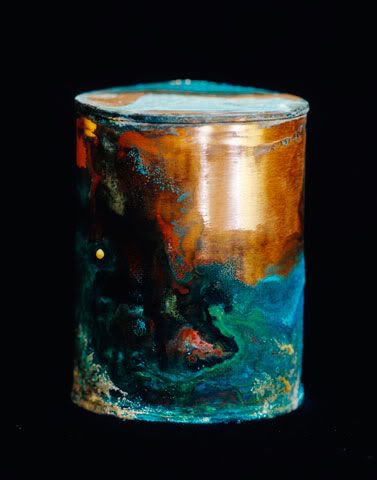
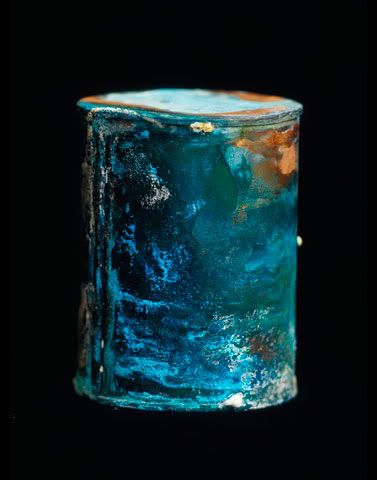
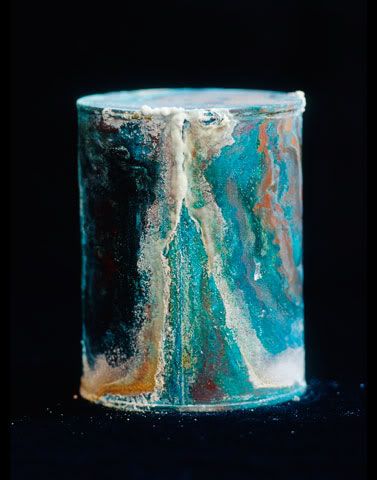
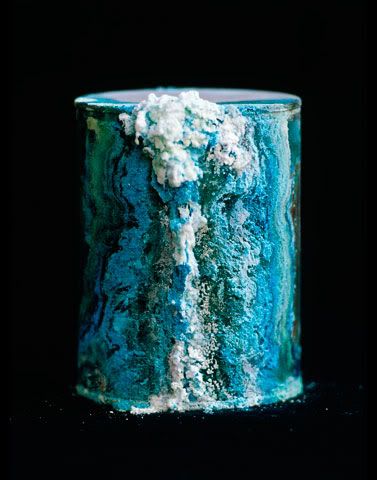
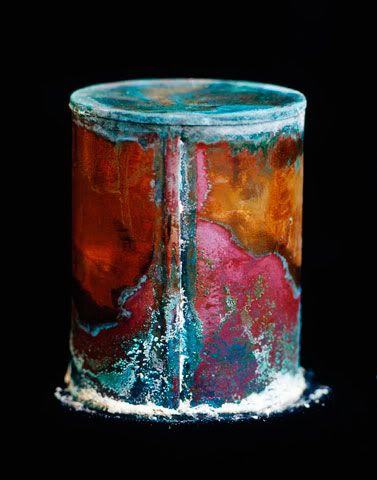
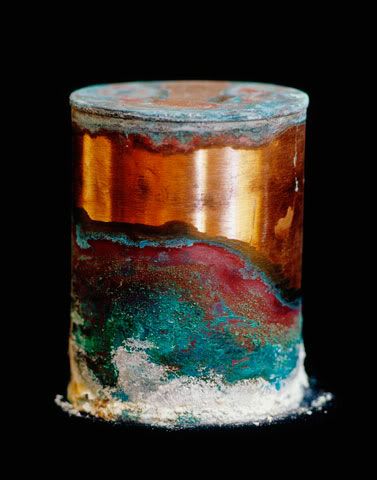

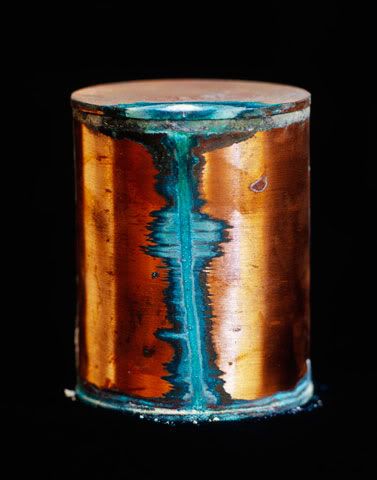








No comments:
Post a Comment
Send me a little love note!